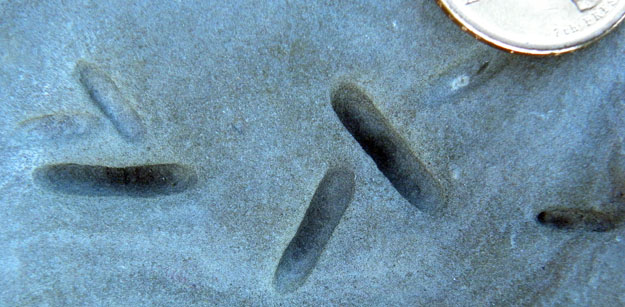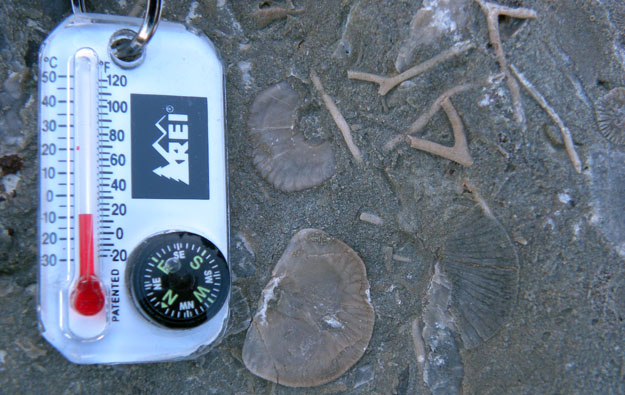CAESAR CREEK STATE PARK, OHIO–I’ve definitely extended my field season as far as possible. (And what a season it has been.) My last fieldwork at the end of this research leave was in Ohio, about three hours south of Wooster. I visited Caesar Creek State Park this morning where a large cut through an Upper Ordovician section has been set aside as a fossil preserve of sorts. It is an emergency spillway for Caesar Creek Lake, which is maintained by the US Army Corps of Engineers. Many Wooster paleontology field trips have stopped here. Fossils can be collected, but only with a permit (obtained at the visitor center) and following significant regulations. The fossils are diverse and abundant, including all the stars of the Ordovician seafloor.
My task was to find, photograph and measure an old trace fossil friend: the boring Petroxestes pera. This is a slot-shaped excavation in carbonate hard substrates formed by bivalves (probably in this case the modiomorphid Corallidomus).

The boring Petroxestes pera (the name means "purse-shaped rock-grinding") in a hardground at Caesar Creek State Park.
These elongated holes are among the first bivalve borings. Some of my students and I think they may have been formed in clusters, and they also may be oriented relative to each other and their local environment. In any case, I found plenty. It was an astonishingly cold morning, though, so I didn’t waste any time on the outcrop!




Pingback: Wooster Geologists » Blog Archive » Fossils in the Wild: Invertebrate Paleontology Field Trip